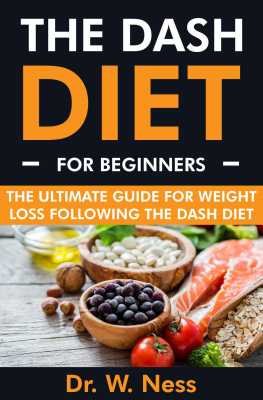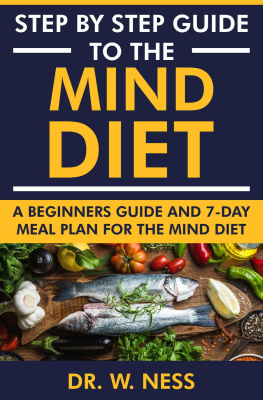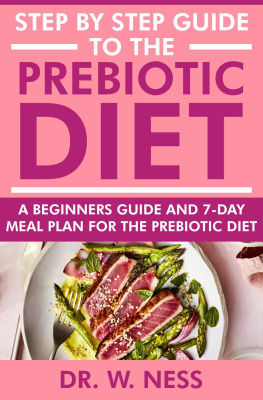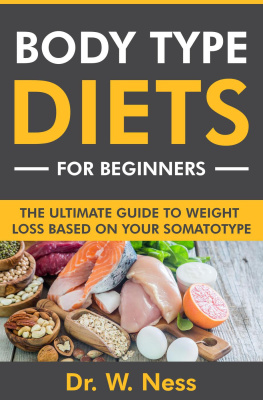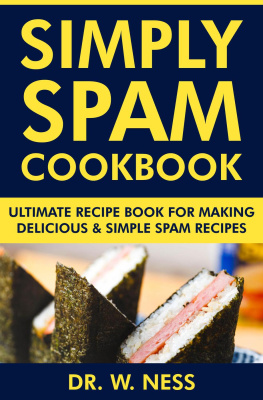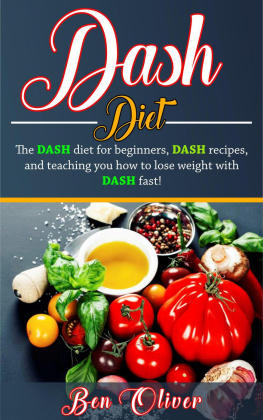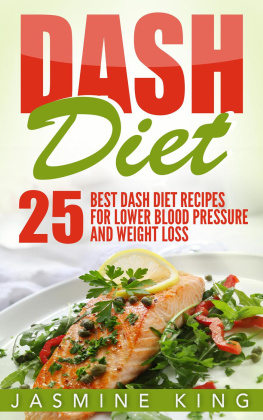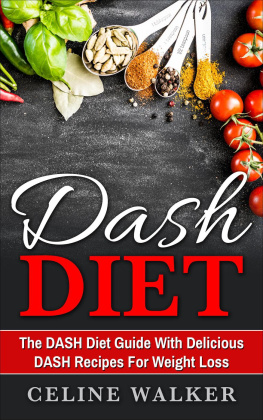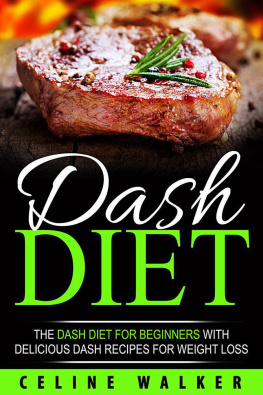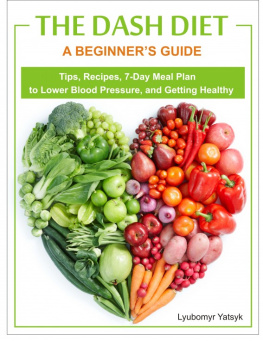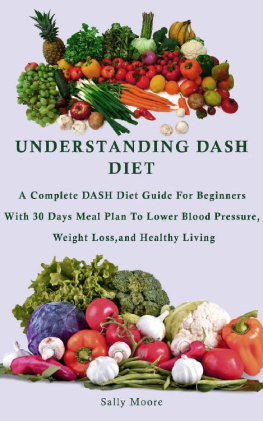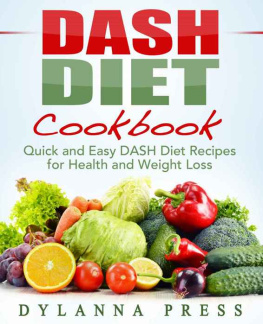The DASH Diet for Beginners: The Ultimate Guide for Weight Loss Following the DASH Diet.
Copyright 2019 by Tiny Shoe Media
All rights reserved. This book or any portion thereof may not be reproduced or used in any manner whatsoever without the express written permission of the publisher.
Disclaimer: This book is not for use by or sale to persons under the age of 18. The efficacy of any information contained inside the book has not been confirmed by FDA-approved research. Any information contained inside the book is not intended to diagnose, treat, cure or prevent any disease. All information presented in the book is not meant as a substitute for or an alternative to information from licensed professionals. Please consult a licensed professional before putting any of the information contained inside the book to use. Individual results may vary.
For additional legal statements and disclaimers and / or to contact the publishing company, please visit our online support portal located at http://www.tinyshoemedia.com
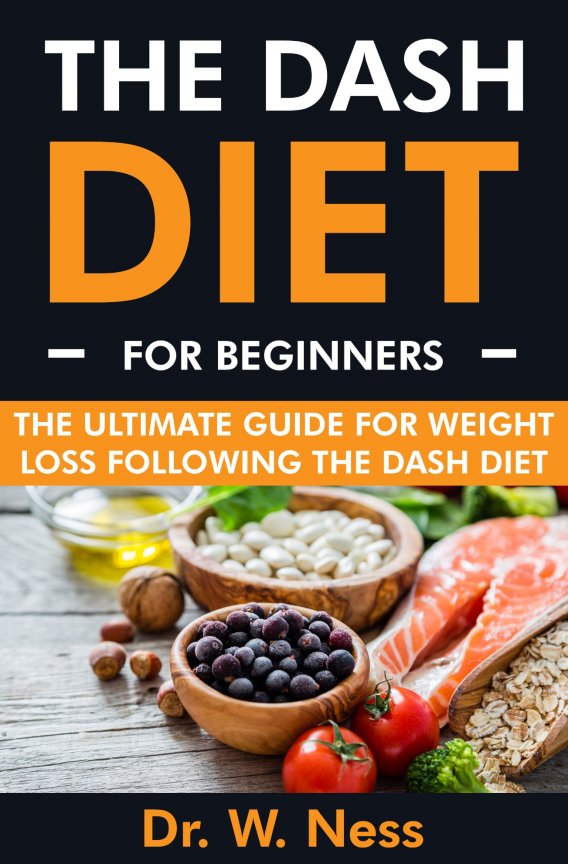
T hank you for purchasing access to our guide on healthy weight loss by using the DASH diet method. We hope this guides content will help you with the knowledge and results you want in terms of your long-term health & weight loss goals.
Weight loss has always been a concern for people in a wide walk of life and the wants and needs of individuals requiring a way to lose excess body fat has given birth of a varied range of products, services, magazines, tv shows and lifestyle suggestions in order to aid with a persons weight loss goals.
Unfortunately, weight loss comes with a set of risks and complications that can hinder an individuals fat loss but, get it right and you can enjoy the benefits of not only losing excess body fat, but feeling and looking healthier overall without the need of medical assistance.
Are you one of those people who have tried a range of exercise programs that never seem to work? Have you lost weight but, as soon as you stop dieting, your lost weight comes back? When you are dieting, do you find it hard to stick to the guidelines of the diet plan you are trying to follow? If any of these are true for you, do not worry.
The fact that you have started a diet plan in the past, followed it and even potentially lost weight following its guidelines is a good thing. It means that your body and mind is responsive to weight loss and that you might just need a couple of small custom-tailored exercise, diet or habit changes to push past that last barrier for you to achieve your desired weight loss goals.
The following chapters in our weight loss guide will cover some of the most common proven strategies that will allow you to lose weight through a combination of tailored exercise routines, foods, lifestyle and other simple changes.
Being overweight is a challenge. Do not worry though, you have already taken the first step in getting help by purchasing our weight loss guide. Read through the pages of our guide and educate yourself on the methods and science behind proven weight loss techniques that can work for you.
Once again, thank you for purchasing this weight loss guide, we look forward to helping you with your weight loss goals.
B efore looking at the specifics of the DASH diet for weight loss, it is important that a person understands the most basic information about their eating habits and that is how to eat a balanced, healthy and nutritious diet.
The human body needs 6 different types of nutrients in order to survive, these are proteins, carbohydrates, fats, vitamins, minerals and water.
Proteins, carbohydrates and fats are categorized into a group of nutrients called macronutrients. Typically, a person needs macronutrients in large amounts as they provide the human body with the energy it needs to function.
Vitamins and minerals are grouped into group named micronutrients due to the human body only needing them in small amounts.
Water is also an essential macronutrient needed in bulk.
Balancing Nutritional Needs.
A balanced, healthy diet means that the foods a person consumes needs to be 'balanced' effectively for the needs of the body to operate at its full potential based on the nutrients we put into it. Most people require this balance to be about 1/4 carbohydrates, 1/4 proteins and 1/2 fresh fruit, vegetables and plants. Next, lets look at the various types of foods and how they can be categorized based on a balanced diet.
Carbohydrate Rich Foods.
Carbohydrates provide energy for the human brain, muscles and other organs. Wholegrain carbohydrates are a preferred source of carbohydrates for the human body because they also provide a good source of fiber that is essential to keep a persons bowels working smoothly and; vitamin B which enables the body to correctly use the energy it receives from the carbohydrates that is receives. The more active an individual is, the more carbohydrates the body needs to maintain a healthy balance.
Foods that contain an abundance of carbohydrates include:
Rices.
Pastas.
Quinoa.
Couscous.
Potatoes.
Breads.
Barley.
Oats.
Protein Rich Foods.
Protein is needed in order to maintain muscle tissue, red blood cells hormone and enzyme production in the body. During childhood our bodies require more protein to aid with growth and development. High protein foods can also contain a lot of fat and fat-soluble vitamins, for example, eggs and seafood.
Foods that are high in protein include:
Eggs.
Fish.
Poultry.
Red Meats.
Pulses.
Milk.
Yogurt.
Cheese.
Nuts.
Tofu.
Vegetables, Fruit & Plants.
Vegetables, pulses, fruits, nuts, seeds and herbs are rich in vitamins, minerals and needed fiber along with other nutrients including antioxidants.
Vitamins & minerals help to keep the bodies organs and metabolism running effectively which helps with overall bodily health.
Antioxidants help the body to repair damage to tissue due to metabolism or environmental variables. Vegetables, fruits and herbs are also low in energy so they can be eaten more often, in larger portions to help a person maintain a healthy weight.
Fruits, vegetables and pulses rich in nutrients include:
Grapes.
Apples.
Oranges.
Bananas.
Carrots.
Salad Greens.
Celery.
Tomatoes.
Strawberries.
Blueberries.
Cucumber.
Parsley.
Oats.
Onion.
Watermelon.

